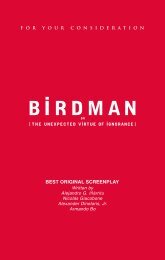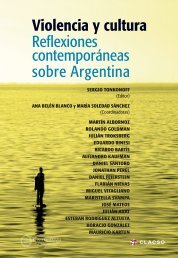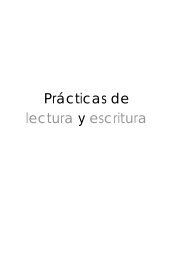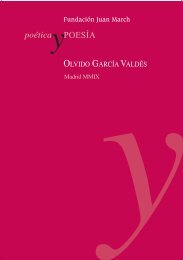blueprints
blueprints
blueprints
You also want an ePaper? Increase the reach of your titles
YUMPU automatically turns print PDFs into web optimized ePapers that Google loves.
160 | alison hawthorne deming<br />
before the buzzwords of multiculturalism and diversity became ubiquitous,<br />
Stephan articulated a vision and practice that embodied them.<br />
The process of building community opened up and changed over time,<br />
as it will do. Stephan was not in favor of hosting readings, fearing that they’d<br />
turn into faddish celebrations of favoritism. But it was the reading series,<br />
launched in 1961 with visits by Stanley Kunitz and Kenneth Rexroth, that<br />
brought the community together—following the auspicious dedication<br />
ceremony at which Robert Frost and then-U.S. Representative Stewart<br />
Udall presided. John Kennedy had just been elected president, and, at the<br />
Tucson gathering, Frost and Udall cooked up the idea of having a poet read<br />
at the upcoming presidential inauguration. From its first public ceremony,<br />
then, the Poetry Center was linked to the national theater of politics. It did<br />
not hurt the broader cause that the first director of the Center sent a letter<br />
to more than one hundred poets worldwide inviting them to spend time in<br />
the Center’s guest cottage. On the local scene, audience development<br />
through the 1960s and 1970s was a homemade affair of making phone calls<br />
to professors and writers, running posters around town, and hanging them<br />
in commercial venues, including, with Ruth Stephan’s help, Walgreen’s drug<br />
stores. Audiences for literature were strong from the start: a couple hundred<br />
for Kunitz and Rexroth, four hundred for Robert Duncan in 1963, a stunning<br />
twenty-six hundred for Archibald McLeish in 1965. Tucsonans like to<br />
joke that there was nothing else to do in town in those days. But that’s not<br />
the whole story.<br />
The dominant story of the American West carries the flag of Manifest<br />
Destiny—that sense of “divine” purpose that led the eastern Anglo culture<br />
to expand its political and economic influence “from sea to shining sea.” It<br />
was an ethos bearing blades and bullets, iron rails and steel wills. It usurped<br />
land inhabited by Mexicans and American Indians, taking and using whatever<br />
it wanted, mining and grazing to the nub, then moving on. A familiar<br />
story by now, this ethos has long been demoted by the anguish and diminishment<br />
that came with its sense of progress. But this was never the only<br />
story of the West. Small stories have emerged within this large one, stories<br />
in which distinctive cultures and landscapes drew artists, writers, anthropologists,<br />
and scientists—the Taos of Mabel Dodge, D. H. Lawrence, Marsden<br />
Hartley, Georgia O’Keeffe—people who brought learning and culture<br />
from their home places but were also hungry to learn from the land and<br />
the people who knew the place intmately through generations of living by<br />
its terms.







